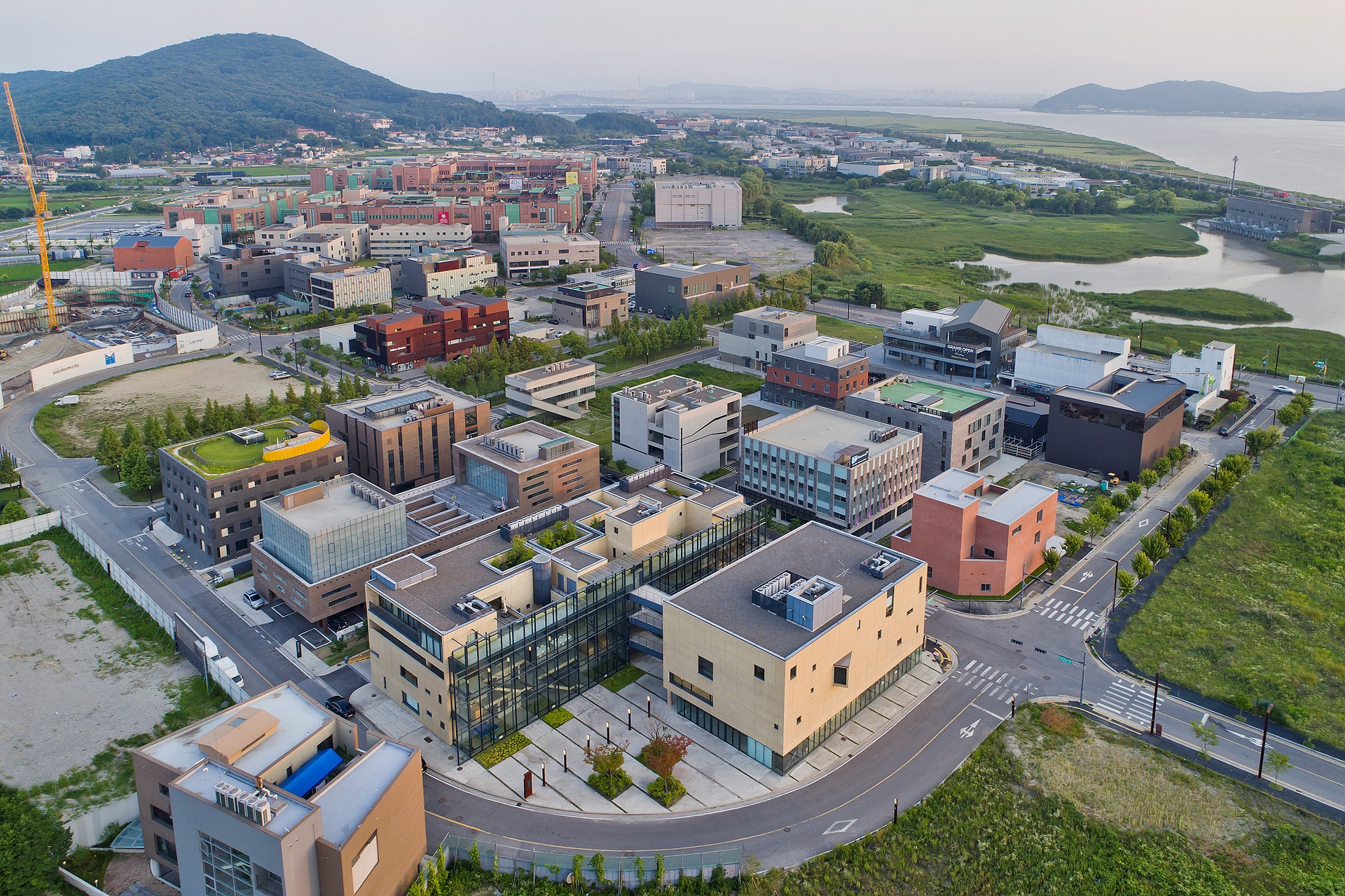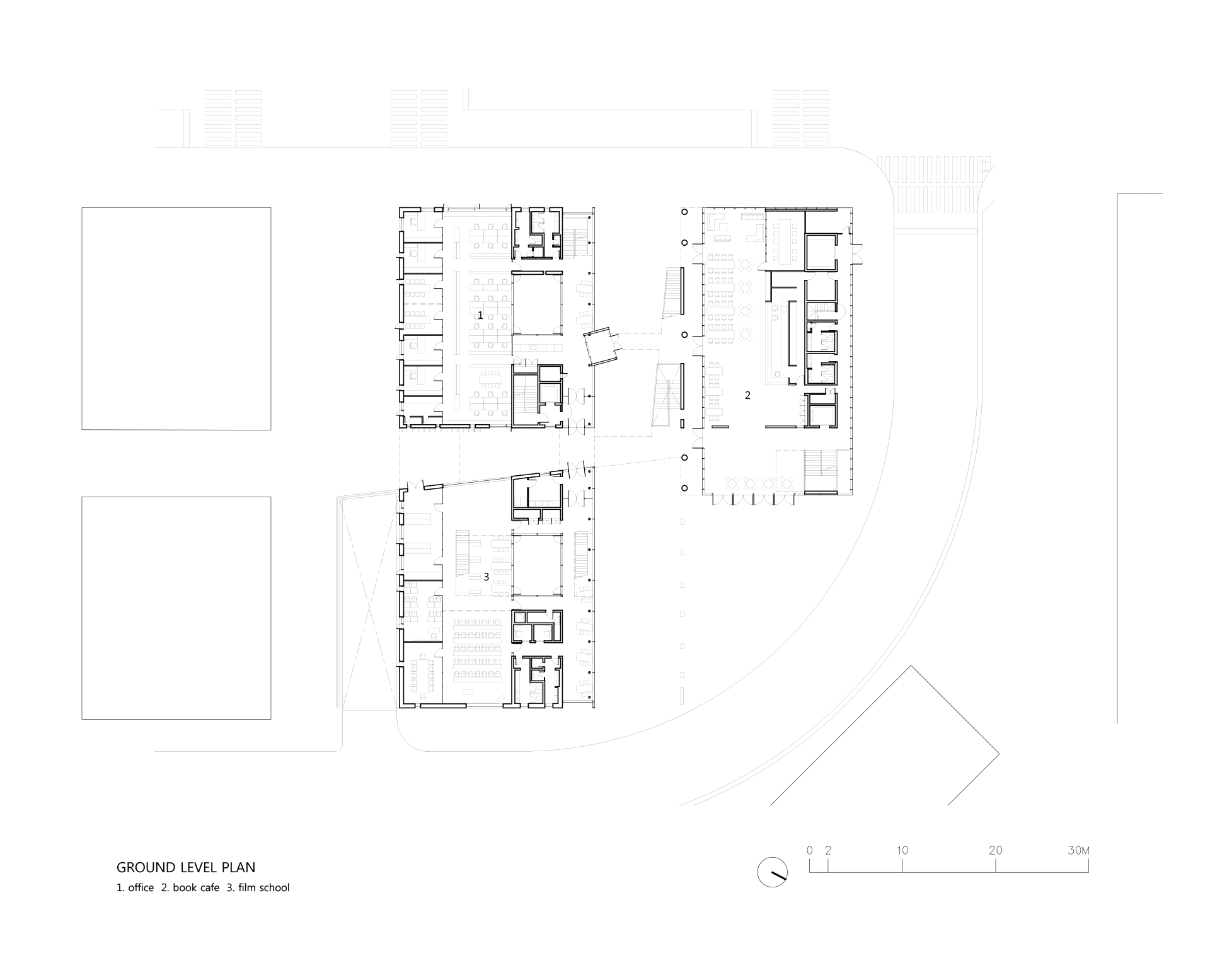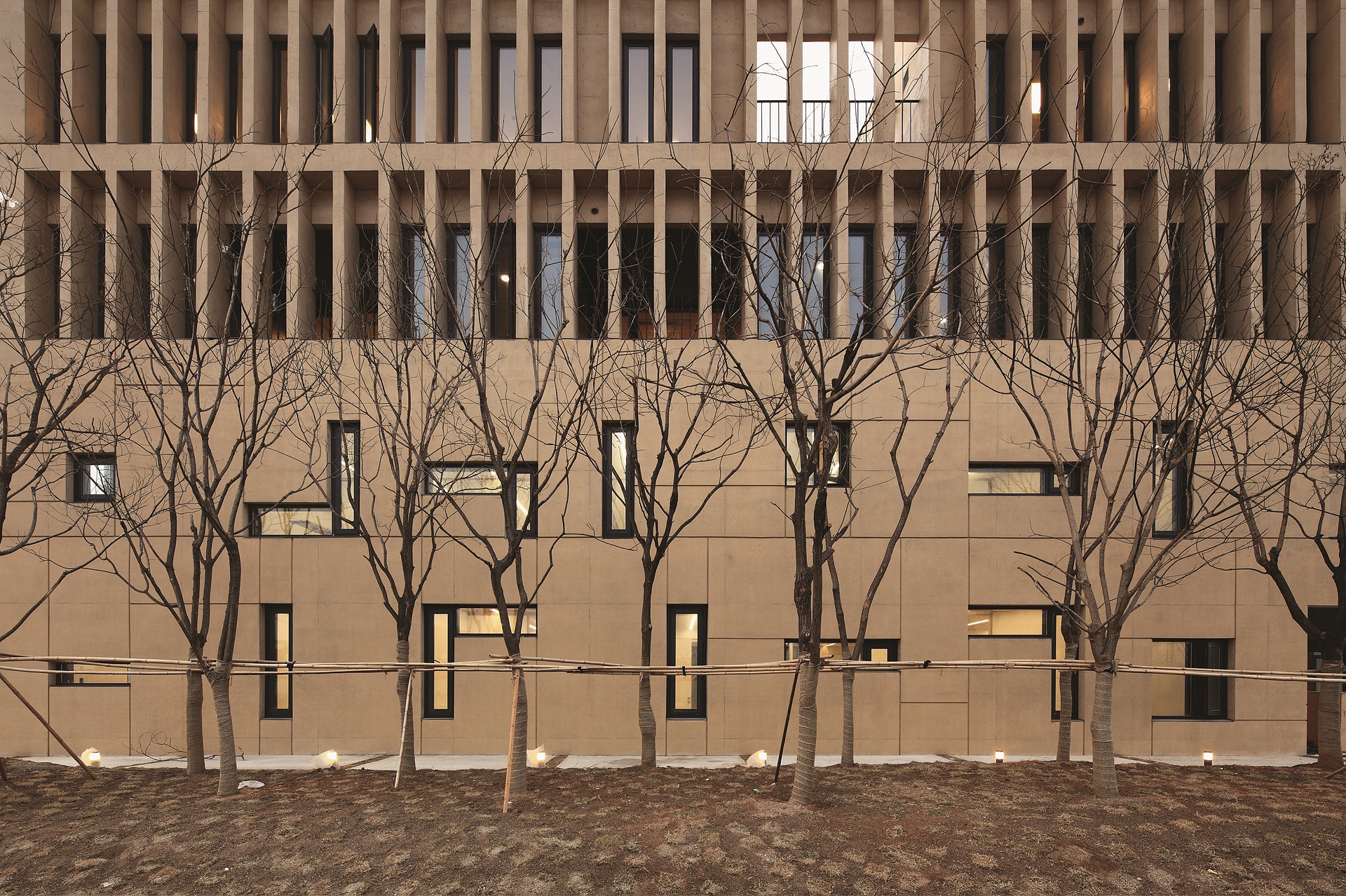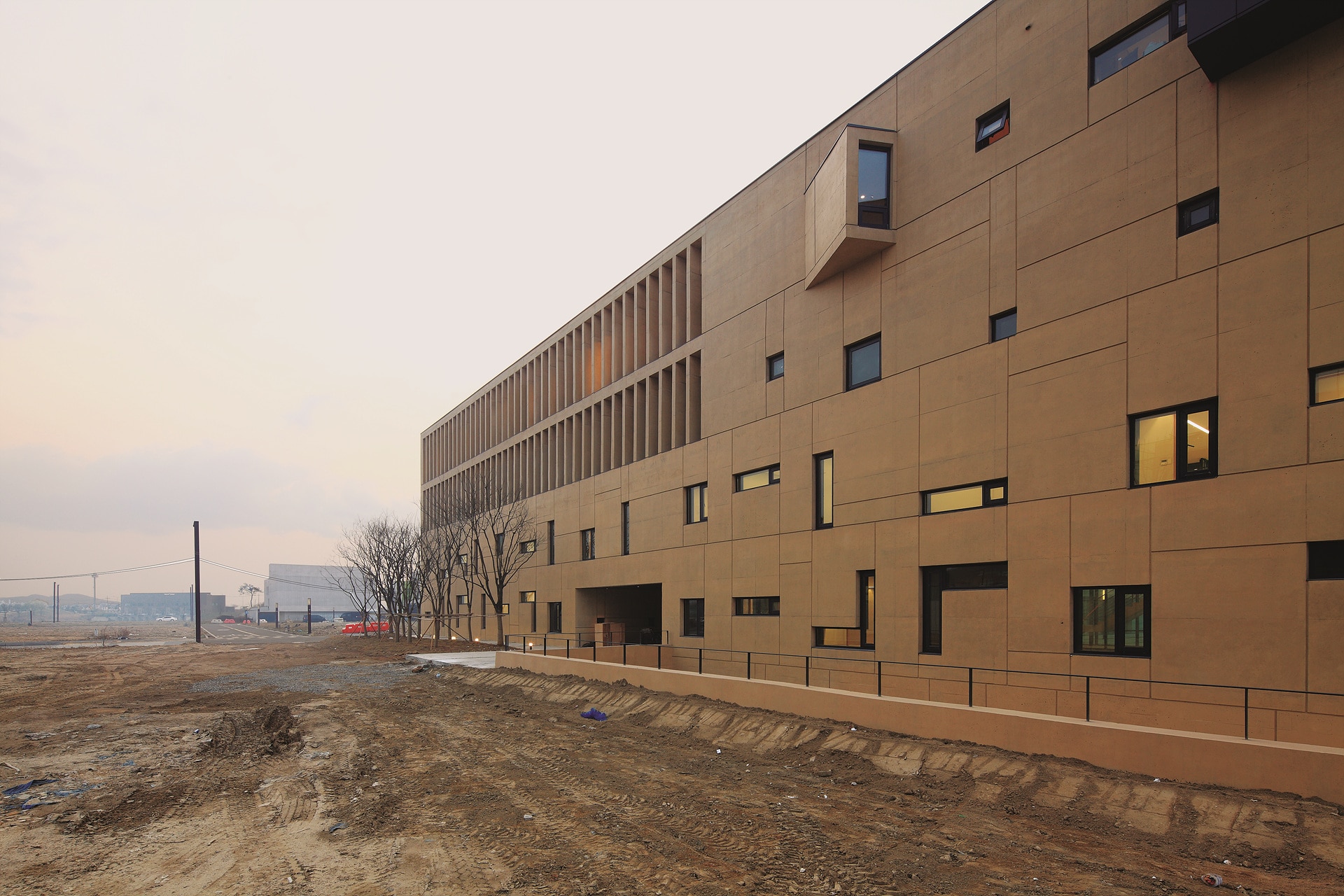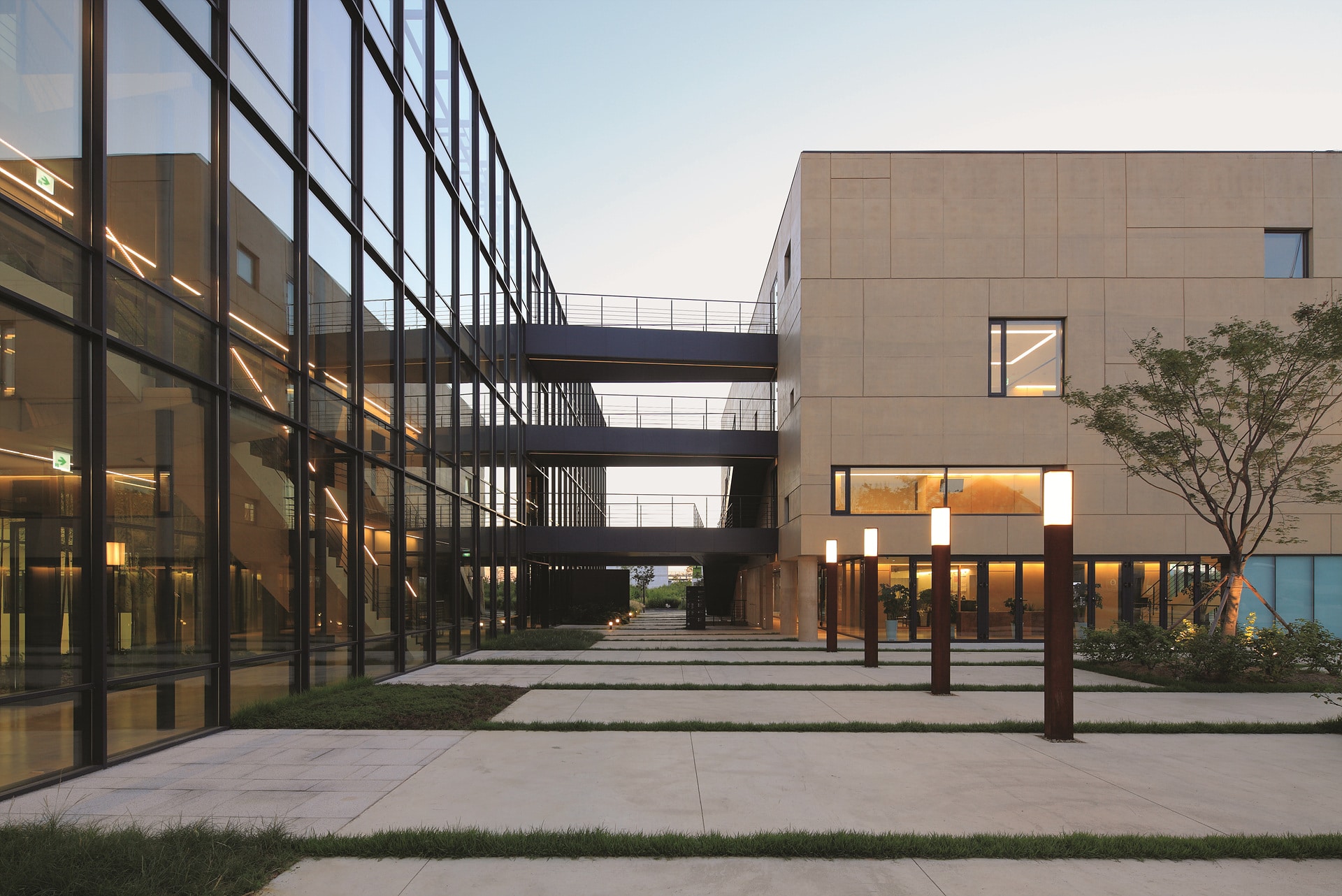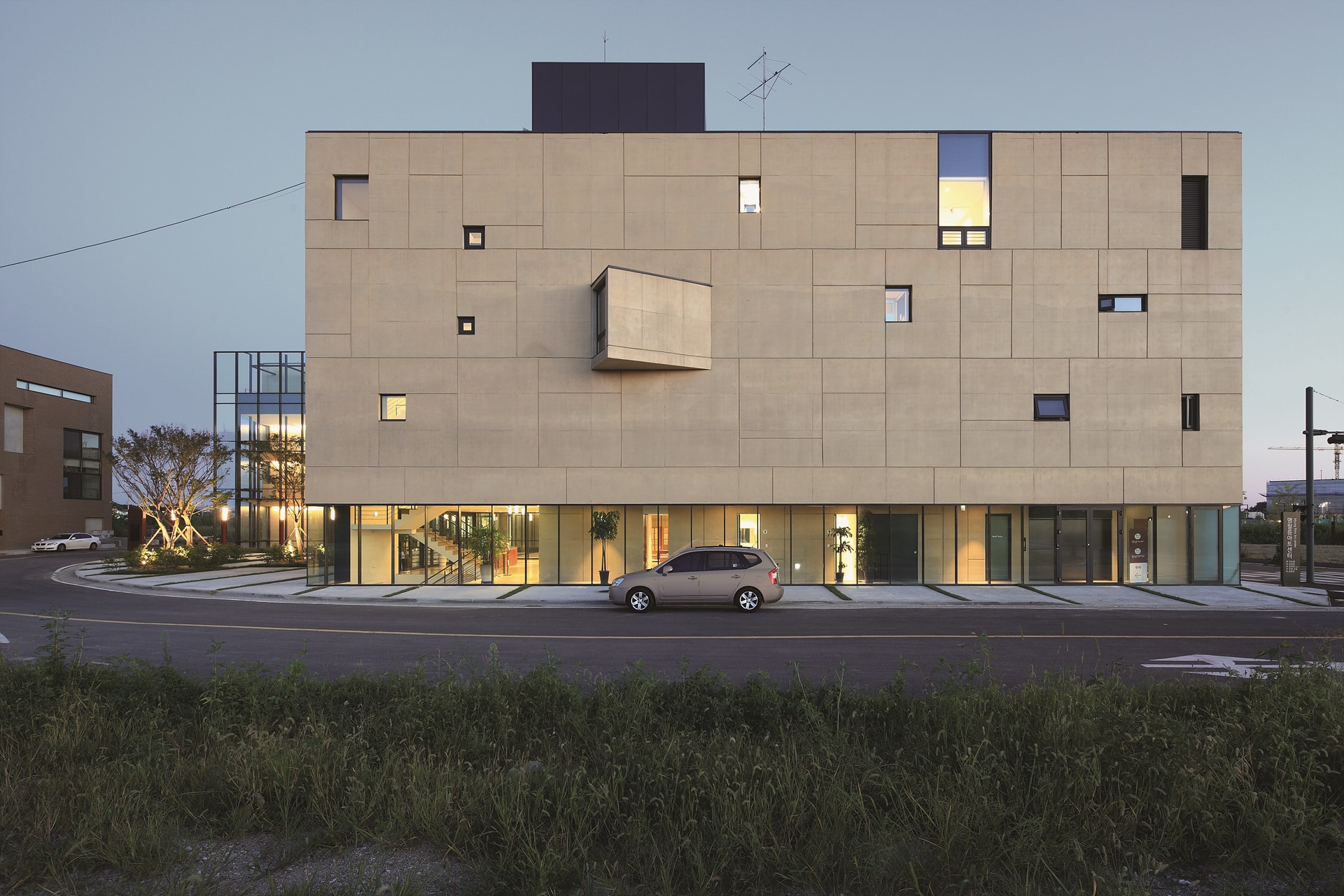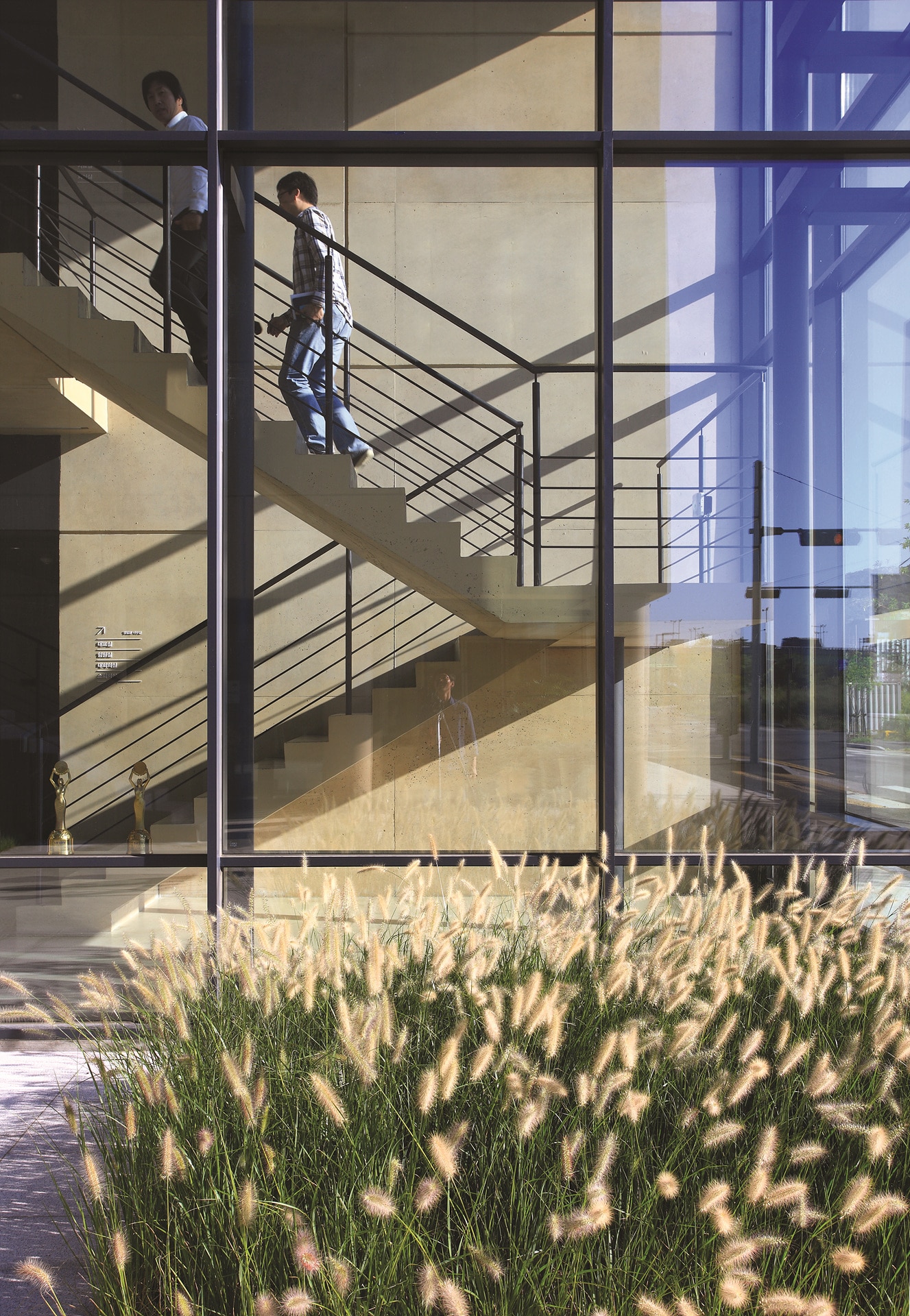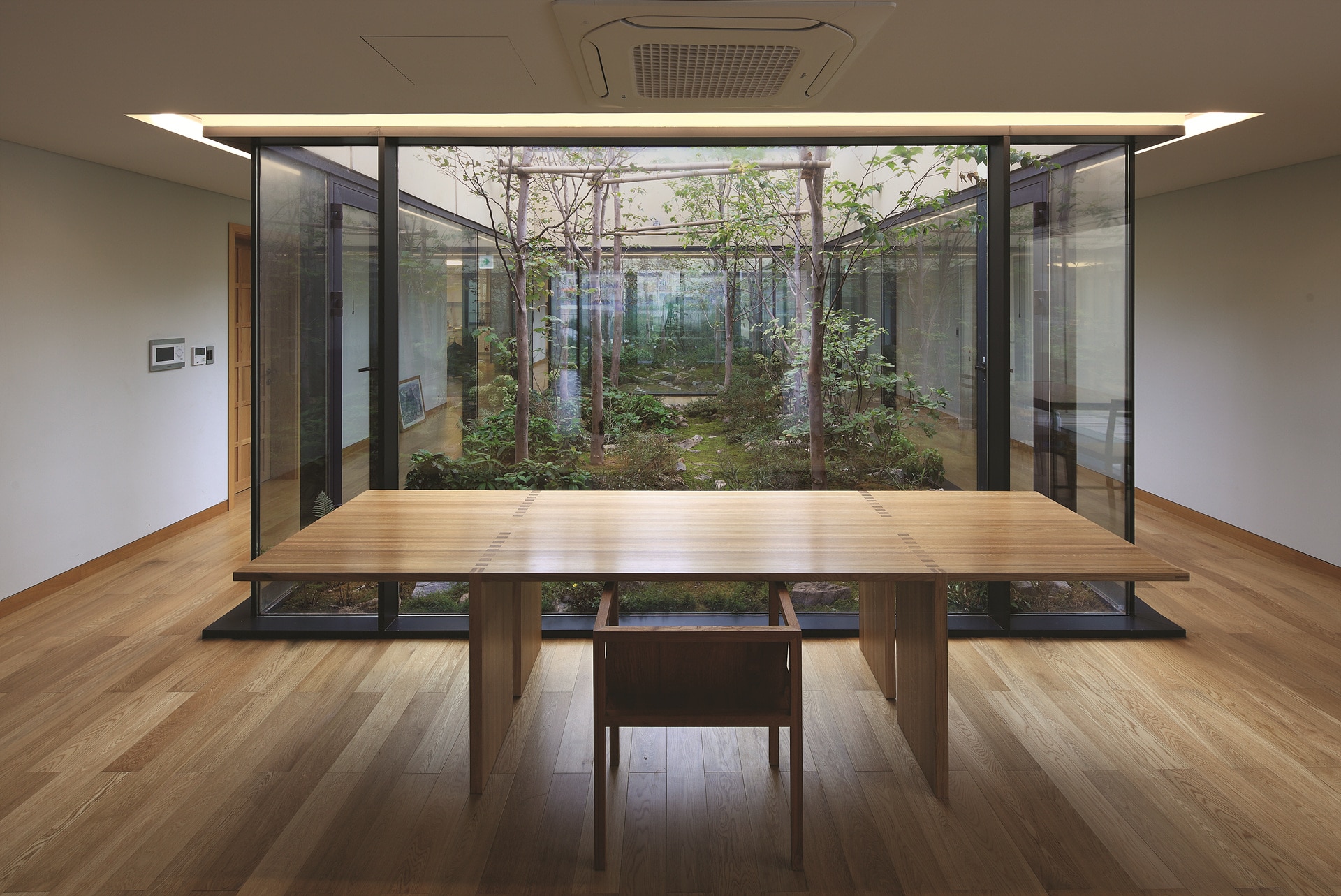Myung Films Complex
| 완공년도 | 2015 |
| 위치 | 경기도 파주 |
| 대지면적 | 3,294m² |
| 건축면적 | 1,644m² |
| 연면적 | 7,929m² |
| Structural engineer | 누리구조 |
| Mechanical engineer | 세아엔지니어링 |
| Electrical engineer | 우림 전기 |
| Contractor | 삼협건설 |
| Lighting design | 뉴라이트 |
| Landscape | 서안 |
| 완공년도 | 2015 |
| 위치 | 경기도 파주 |
| 대지면적 | 3,294m² |
| 건축면적 | 1,644m² |
| 연면적 | 7,929m² |
| Structural engineer | 누리구조 |
| Mechanical engineer | 세아엔지니어링 |
| Electrical engineer | 우림 전기 |
| Contractor | 삼협건설 |
| Lighting design | 뉴라이트 |
| Landscape | 서안 |
명필름은, 꽤 오래 전의 ‘접속’에서 최근의 ‘건축학개론’까지 많은 문제작과 흥행작을 만들어 선보인 비교적 젊은 영화제작사이다. 새로운 도시 파주에 터를 다시 잡은 그들은 영화제작사 기능의 건물만을 짓고자 하지 아니하였다. 이 땅의 가파른 영화환경을 개선 하고자 영화학교를 만들고자 했으며, 외부인들에게도 개방하는 공연과 집회의 다목적 공간과 전시장을 수용하고자 했다. 또한 개인의 주택과 영화학교의 학생이나 장기 방문객을 위한 기숙사와 게스트룸까지 포함하고자 했으니, 생산과 소비 그리고 문화와 거주가 있는 이 복합적 기능은 작은 도시를 설계해야 하는 일이 본질이었다.
차량 위주의 도로체계를 타파하기 위해 파주출판도시 건축지침에서 설정한 보행 위주의 내부도로를 적극적으로 받아들여, 전체의 매스를 두 부분으로 나누고 가운데를 관통하는 도로를 이 작은 도시의 광장으로 삼아 누구도 자유롭게 만나고 헤어지며 머무르게 하였다.
갈라진 매스는 브리지와 데크로 연결되어 이 작은 도시내의 광장과 도로에서 행해지는 행위들을 서로 목격하고 반응할 수 있다. 더구나 광장에 면한 주된 매스의 면을 투명한 유리벽으로 세워 그 속에서 일어나는 대부분의 행위를 외부에 노출시켰으니 그 삶의 풍경이 보인다. 내부는 더욱 도시적이다. 다양한 기능의 공간들이 배치된 속으로 도로 같은 통로들이 관통하며 곳곳에 작은 공원과 휴게의 공간이 있다. 물론 모두가 외부와 긴밀한 관계를 맺고 있으며 모두가 서로에게 개방되어 있다.
상부에 있는 주거는 개인적 영역이어서 그 프라이버시가 최대한 보장되도록 하였다. 이 경우에도 가족간에 이루어지는 세계 또한 공동체이어서 그 속에서도 여러 층위를 갖는 공간들이 있다. 그러니 이 건축의 공간이 갖는 층위의 다양함은 대단히 크다.
이 건축은 그래서 늘 변하는 풍경으로 존재하며 그 풍경이 적층되어 건물마저 바꾸고 시간을 흘리면 이 작은 도시는 비로서 하나의 건축이 된다. 건축은 건축가가 만드는 게 아니다. 거주자가 만든다. 어쩌면 감독이 의도하지 않은 제3의 카메라에 담겨서 나오는 영화처럼, 현실의 객관성을 담보하는 그게 진짜 영화며 진실된 건축인지도 모른다.
Myung Flims is a relatively young and successful film production and distribution company. They did not just intend to have a building with only the functions of film-production in 2nd phase of Paju Book & Film City, but wanted to have more facilities as like a film-making school, multipurpose spaces for performing arts, movies, and exhibitions which would be open to outsiders. In addition, they wanted to build housing for individuals, and a dormitory and guest rooms for students and long-term visitors at the same time the office building was constructed. The basic concept of this project was, accordingly, to design a small city which has complex functions such as production, consumption, culture, and residence.
Based on the construction guidelines of Paju Book City on the promotion of pedestrian streets within the premises, it was highly required to get rid of the demerits of the road system with more emphasis on vehicles for designing this architectural structure. For instance, dividing the entire mass into two parts, and providing a pedestrian route in the middle as the main square of this small city must be a good strategy for anyone to freely meet, stay, and part.
The mass divided into two parts are connected by a bridge and a deck so that people there can look over and respond to what’s going on in the square and the street in this small city. The inside of the main mass facing the street is visible from outside because it is covered with the transparent glass wall. This way, the landscape of life in the mass is exposed. The inside is more like an urban area. Passages, like streets, travel through the inside of the mass where the spaces with various functions are positioned. There are small parks and resting places here and there. Of course, all of them are designed to have close relationship with the outside, and are open to each other.
As the residential section at the top is a private area, maximum emphasis has been placed on privacy. The residential section for owner’s families is also a community which consists of spaces with different layers. Therefore, the diversity of layers, which is noticeable, should be respected.
It’s natural that this architecture exists as an ever-changing landscape. With the memories of the changing landscape piling one over the other, the buildings change; with the dimension of time, this small city becomes an architectural structure. It is made by the residents. Perhaps, like some scenes of a movie, caught by a 3rd camera and not intended by the movie director, a true movie or a real architecture may be worthy enough only if they are predicated on the objectivity of the real world
